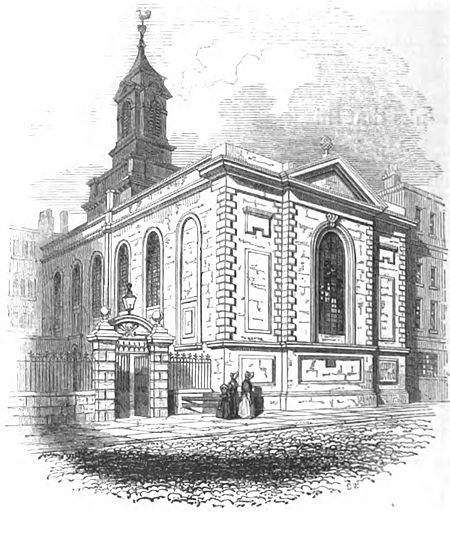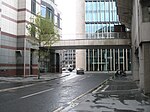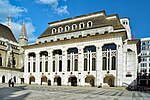St Stephen Coleman Street

St. Stephen's Church, Coleman Street, also called "St Stephen's in the Jewry", was a church in the City of London, at the corner of Coleman Street and what is now Gresham Street (and in Coleman Street Ward), first mentioned in the 12th century. In the middle ages it is variously described as a parish church, and as a chapel of ease to the church of St Olave Old Jewry; its parochial status was defined (or re-established) permanently in 1456. The body of the medieval church was destroyed in the Great Fire of London of 1666, and was replaced with a new structure by the office of Sir Christopher Wren. This second church was destroyed by bombing in 1940 and was not rebuilt after the War. Substantial records survive for the church and parish, including churchwardens' accounts (from 1486), parish registers (from 1538), tithe rate and poor rate assessments (from 1592) and vestry minutes (from 1622). There is also the "Vellum Book", a book of record mainly of church property, dated 1466.St. Stephen's was one of two City churches dedicated to the Christian protomartyr St. Stephen who, by tradition, suffered lapidation in Jerusalem in about 35 AD. Coleman Street is named after the charcoal burners who used to live there. From its situation in the quarter of London inhabited by many Jews, John Stow asserted, incorrectly, that the building had been used as a synagogue.
Excerpt from the Wikipedia article St Stephen Coleman Street (License: CC BY-SA 3.0, Authors, Images).St Stephen Coleman Street
Mason's Avenue, City of London
Geographical coordinates (GPS) Address Nearby Places Show on map
Geographical coordinates (GPS)
| Latitude | Longitude |
|---|---|
| N 51.5155 ° | E -0.0904 ° |
Address
El Vino
Mason's Avenue
EC2V 5BT City of London
England, United Kingdom
Open on Google Maps








